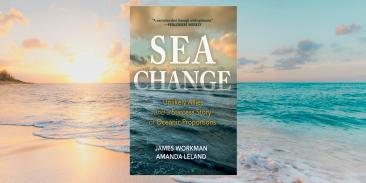High Forest, Low Deforestation
Forests with low deforestation rates need climate finance too

Regions with largely intact tropical forests and low deforestation rates, known as high forest, low deforestation, or HFLD regions, play an important role in stabilizing the global climate system.
As hosts to some of the world’s largest remaining intact ecosystems, HFLD regions support countless numbers of wild fauna and flora, as well as the livelihoods of Indigenous Peoples and forest-dwelling communities. Yet low deforestation rates don’t mean HFLD regions are safe from deforestation. Between 2010 and 2019 six countries lost their HFLD designation due to forest loss.
Download our latest HFLD factsheet (PDF)
Maintaining low deforestation rates means removing threats that have ravaged many of the world’s tropical forests – illegal logging, mining, and the cutting or intentional burning of forests to expand agricultural production. Many HFLD regions don’t have a financial incentive to keep their forests alive in perpetuity and currently lack access to climate finance.
The financing models and carbon crediting methodologies used for HFLD regions need to be different than models used for regions with higher deforestation rates. This is why EDF is analyzing the tools to finance forest conservation, including through the use of high-quality carbon credits, for HFLD regions.
Explore our resources below to learn more.
HFLD briefs, blogs and more
- Indigenous Communities Need Access to a High-Integrity Carbon Market (commentary)
November 2024
This commentary piece overviews Indigenous communities' need for access to carbon markets in order to protect their lands sustainably. - EDF Commends Integrity Council’s Approval of REDD+ Methodologies as a Step Forward for High-Integrity Forest Climate Action
November 2024
This PR/media statement commends the Integrity Council for the Voluntary Carbon Market (ICVCM) and their approval of REDD+ carbon credit methodologies under its Core Carbon Principles (CCPs) high-integrity label. - A letter to the Integrity Council board from VP of Forests, Mark Moroge
October 2024
This is a feedback letter to IC-VCM on HFLD. - Carbon markets must recognize Indigenous ‘high forest, low deforestation’ areas (commentary)
October 2024
This op-ed was published in Mongabay by Indigenous Partners Fermin Chimatani Tayori and Onel Masardule. - Justification for high forest, low deforestation crediting
April 2023
This paper explains how jurisdictional HFLD credits meet integrity and additionality thresholds for fungibility.
Spanish version | French version - Forest climate finance must be more equitable to support Indigenous Peoples and local communities
April 2023
This blog explains why Indigenous Peoples and local communities living in HFLD regions need access to forest climate financing. - Conservatively issued jurisdictional-scale HFLD credits represent additional emission reductions
April 2023
This brief explains why conservatively issued jurisdictional-scale HFLD credits are high-integrity and additional.
Spanish version | French version - What are HFLDs and why are they important?
April 2023
This fact sheet explains the definition of HFLD, the challenges facing these regions, and the importance of HFLD financing.
Spanish version | French version | Portuguese version
MEDIA CONTACT
Raul Arce Contreras
(240) 480-1545 (mobile)












